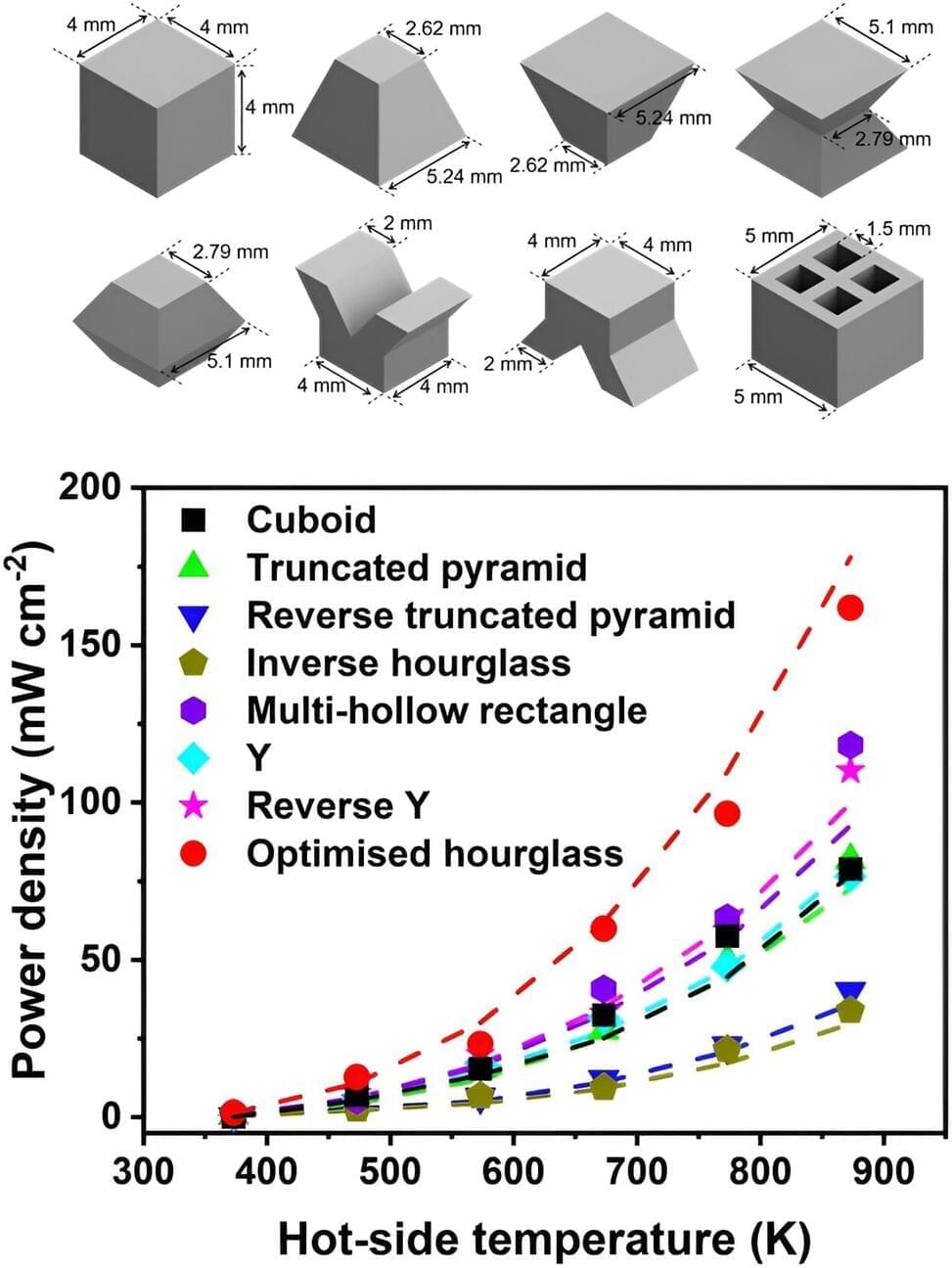In recent years, engineers and scientists worldwide have been working on new technologies for generating electricity from renewable energy sources, including photovoltaics (PVs), wind turbines and hydro-power generators. An alternative solution for mitigating the impact of climate change could be to convert the excess or waste heat generated by industries, households and hot natural environments into electricity.
This approach, known as thermoelectric power generation, relies on the use of materials with valuable thermoelectric properties. Specifically, when these materials are exposed to particularly high temperatures on one side and colder ones on the other, electrons within them start to flow from the hot side to the cooler one, which generates electrical potential
While recent works have identified some promising thermoelectric materials, the module performance is unsatisfactory due to the challenges associated with designing and fabricating optimum module structures. This significantly limits their potential real-world integration in thermoelectric modules.
